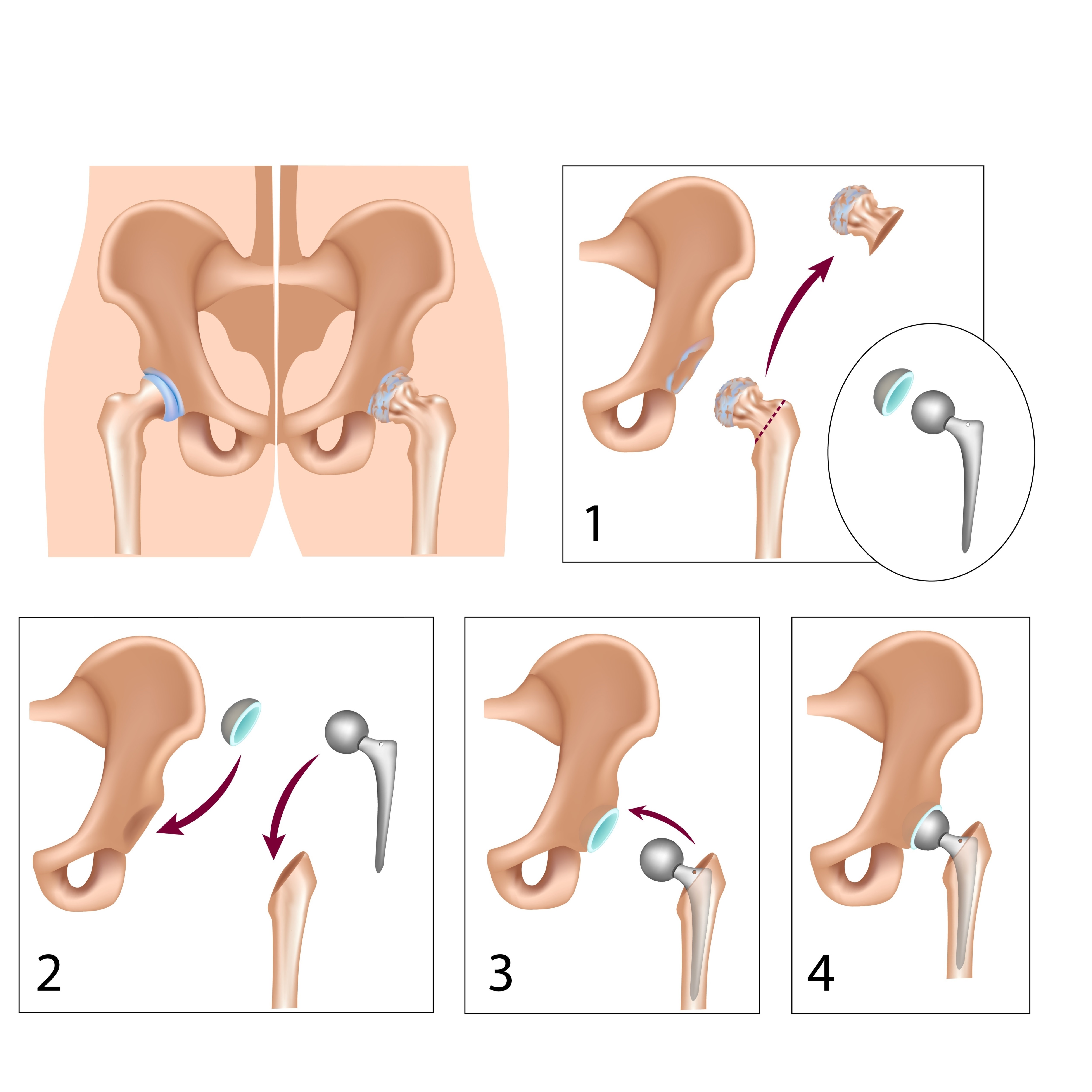Hip replacement surgery is a common procedure performed to replace a damaged or diseased hip joint with an artificial implant. This surgery is typically recommended for individuals who experience persistent hip pain and limited mobility due to conditions such as osteoarthritis, rheumatoid arthritis, hip fractures, or other hip-related injuries.
Hip replacement surgery involves removing the damaged head of the femur (ball of the hip joint) and preparing the socket, in order to accommodate a new ball and socket joint.
There are several types of hip replacement. The two main types are cemented or uncemented based on how they are fixed to your bones.
Commonly used bearing surfaces of the hip joint are
1. Metal on plastic
2. Ceramic on plastic
3. Ceramic on ceramic

I choose the type of fixation and bearing surfaces based on the quality of bone stock as well as functional needs of individual patient
Overall, total hip replacement is one of the most successful operations in modern day surgery. In my practice, success rate of a total hip replacement is in the range of 90-95%. Pain relief and improvement in the quality of life is substantial in vast majority of patients. It improves mobility and alleviates pain during day-to-day activities. It also helps patients maintain an independent life with little/no dependence on carers/family.
Risks of total hip replacement include infection (around 1%), dislocation (1-2%), bleeding, DVT (clots in your leg), PE (clots in your lung), leg length discrepancy, loosening, wear, medical and anesthetic complications. Precautions are taken in order to minimize all the above risks e.g. use of antibiotic prophylaxis and specialized laminar airflow theatres to minimize the risk of infection, use of blood-thinning medications, and mechanical methods to reduce the risk of clots, etc.
You are generally admitted to the hospital on the day of surgery. The average length of stay in the hospital is 3-4 days. During the hospital stay, a multi-disciplinary team including an orthopaedic team, ward doctor, nursing staff, physiotherapist, and occupational therapist, treats you. Once you and the team are happy with the progress, you are discharged from the hospital.
Post-operative mobilization includes the use of walking aids like walker or crutches, to begin with. You can subsequently use the walking stick/s until independent mobility can be achieved.
You can expect some swelling and redness around the wound and of the lower leg for a few weeks. Generally, by 6 to 12 weeks, functional recovery can be expected in most patients.
I choose the implants for hip replacement very carefully for each patient. The type of hip replacement used in my clinical practice has a very long track record (>25 years) with excellent long-term survival. Currently, my preferred implants are Corail Femoral stem system (uncemented stem manufactured by Depuy Synthes), C stem AMT (cemented stem manufactured by Depuy Synthes), Pinnacle cup system (uncemented cup manufactured by Depuy Synthes) and Marathon cup (cemented cup manufactured by Depuy Synthes).
Copyright by FUW 2017-2025. All rights reserved.